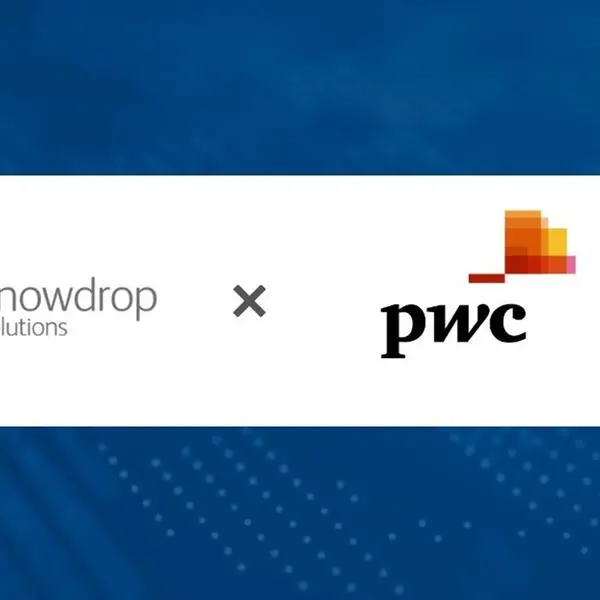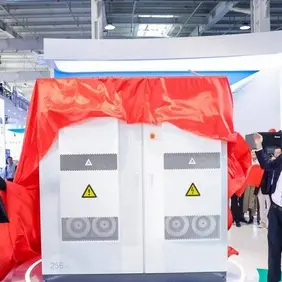Fitch Ratings - Dubai: Fitch Ratings has placed Doha Bank Q.P.S.C.'s (Doha Bank) Long-Term Issuer Default Rating (IDR) of 'A' on Rating Watch Negative (RWN). The Short-Term IDR and the Support Rating Floor (SRF) were also placed on RWN. Doha Bank's Viability Rating (VR) has been affirmed at 'bb'. A full list of rating actions is provided below.
The RWN reflects the Qatari banking sector's increasing reliance on external funding and recent rapid asset growth, which may have moderately weakened the sovereign's ability to provide support to the system, in case of need.
KEY RATING DRIVERS
Non-resident funding reached USD193 billion or 48% of the Qatari banking sector's liabilities at end-August 2021 (up from USD121 billion or 38% at end-2018), while banks' foreign assets remained broadly stable (USD60 billion at end-August). As a result, the banking sector's net external debt at end-August 2021 increased to a substantial USD133 billion or 82% of forecast 2021 GDP (USD57 billion or 31% at end-2018). This high level of external funding, coupled with the large size of the banking system (total assets increased to 302% of forecast 2021 GDP at end-August 2021 from 212% at end-2018), could have moderately weakened the authorities' ability to support the banking sector, if needed, notwithstanding the substantial resources at the sovereign's disposal.
The 'A' domestic systemically important bank (D-SIB) SRF for Qatari banks is at the higher end of the typical range for D-SIB SRFs in jurisdictions where the sovereign is rated 'AA-' and, in Fitch's view, reflects a high propensity to support the banking system.
Fitch will resolve the RWN following further analysis of the current composition and stability of Qatari banks' non-resident funding, the evolution of this funding in volumes and sources, banks' liquidity-management plans and the sovereign's ability to provide liquidity support to banks, in case of need. In case of a downgrade, Doha Bank's Long-Term IDR and SRF are expected to remain in the 'A' category.
IDRs, SR and SRF
Doha Bank's IDRs, Support Rating (SR) and SRF continue to reflect an extremely high probability of support from the Qatari authorities for domestic banks, if needed. This considers Qatar's still strong ability to support domestic banks, as reflected in the sovereign's 'AA-'/Stable rating and substantial net foreign assets (end-2020: equivalent to 187% of GDP) and revenues.
It also reflects Fitch's view of a strong propensity to support the banking sector, including Doha Bank, based on past episodes of support. These include in 2H17, when the authorities placed significant deposits with banks to support sector liquidity, following the start of the blockade between Qatar and some of its neighbours, and between 2009 and 2011, when some banks received capital injections to enhance their capital buffers and the government purchased some problem assets from the banks. The government owns stakes in all Qatari banks.
The Short-Term IDR of 'F1' is the lower of two options mapping to an 'A' Long-Term IDR, reflecting that a significant proportion of the banking sector's funding is government-related and a stress on Doha Bank is likely to come at a time when the sovereign itself is experiencing some form of stress.
VR
Fitch has revised the outlook on Qatari banks' operating environment to stable from negative as short-term downside risks from the pandemic fallout on banks' credit profiles have subsided. Fitch forecasts Qatar's real GDP growth to rebound to 1.6% in 2021 (2022: 2.5%), following a 3.6% contraction in 2020, supported by higher hydrocarbon prices and the North Field LNG expansion. The sector's credit growth was 6.7% (annualised) in 1H21 (2020: 8.5%), despite cutbacks in capex by the government.
We believe the near-term risks on the sector's asset quality (end-1H21: average Stage 3 loans ratio of about 2%) are largely contained - even after the expiry of the Qatar Central Bank (QCB) credit deferrals - and offset by the recovering operating environment and banks' strong provisioning levels (end-1H21: 140% average total reserve coverage of impaired loans). Qatari banks have adequate capital buffers (end-1H21: average CET1 ratio of 14% against an 8.5% regulatory minimum requirement) and healthy pre-impairment operating profitability offsetting a potential moderate increase in problem loans.
Doha Bank's 'bb' VR reflects a high-risk profile, historically weak asset quality, below-average profitability and ensuing pressures on core capitalisation, as well as a high reliance on foreign funding. However, the VR is underpinned by the bank's well-established domestic franchise (end-1H21: 6% market share of assets) and the execution of the bank's consolidation strategy.
We view the bank's underwriting and risk controls as weaker than peers', due to high single-name and sector concentrations, which expose the bank to material credit risk. However, Doha Bank has tightened its risk framework and increased monitoring efforts of its weak GCC operations as part of a loan book clean-up. It aims to contain asset-quality risks through a reduction in high-risk construction and real-estate exposures (end-1H21: 33% of loans; end-2019: 40%) and growth in higher-quality government lending (end-1H21: 25%; end-2019: 11%). The latter was a driver of the bank's rapid loan growth in 1H21 (10%; target 7% in 2022).
The bank's non-performing loans (NPL) ratio (end-1H21: 5.6%) is higher than peers', reflecting the seasoning of high-risk contracting and GCC exposures. NPL generation was still high in 1H21 (3.1% annualised basis; 2020: 6%). The NPL ratio was flattered by large write-offs (1H21: 120bp of gross loans; 2020: 550bp), as part of the clean-up exercise. Risks are high from Stage 2 loans (25% of gross loans) at end-1H21 and loans that are subject to deferrals (29%; a much lower 2% considering deferred instalments only). Total reserves coverage of NPLs decreased to 79% at end-1H21 (specific coverage of 53%), due to write-offs.
Operating profitability has improved (1H21: 1.8% of risk-weighted assets (RWAs); 2020: 1%) but remains below sector average and is still dampened by high impairment charges (45% of pre-impairment operating profit; 2020: 66%). Net interest margin (NIM) was resilient in 1H21 at 2.6% (2019: 2.4%), underpinned by lower funding costs. Cost efficiency has also slightly improved (costs/income ratio of 28%) as per the bank's strategy.
We expect some moderate NIM pressure in the medium term to result from a higher share of low-yielding government lending and an increase in long-term deposits and foreign funding. Impairments are likely to remain high in 2021-2022, given asset-quality pressures, although the bank's net cost of risk (1H21: 150bp) should gradually wane in the medium term, due to fewer write-offs and potential recoveries from lumpy NPLs conservatively provisioned for or written-off.
Doha Bank's CET1 ratio of 13.2% at end-1H21 (end-2019: 11.5%) was weak, considering the bank's high-risk profile, single-name risk and the potential for further asset-quality impairments due to a large stock of unreserved Stage 2 and 3 loans (end-1H21: 2.1x CET1; end-2019: 2.0x). However, core capitalisation has improved, primarily due to profit retention and loan deleveraging in 2020, as per the bank's strategy. The bank's Tier 1 ratio (18.9%) and total capital adequacy ratio (CAR; 20%) are supported by QAR4 billion of additional Tier 1 capital notes.
Buffers over regulatory minimum capital requirements are sound (about 470bp for the CET1 ratio at end-1H21). We expect the CET1 ratio to be only slightly eroded from its current level by renewed private-sector loan growth and dividend distributions.
The bank's gross loans/deposits ratio of 128% and net loans/deposits of 122% (versus banking sector average of 125%) at end-1H21 reflect a high reliance on wholesale funding (end-1H21: 39% of total funding), with the majority from foreign sources and due within one year. Additionally, about 47% of customer deposits was sourced from non-residents, exposing the bank's funding to changes in investor sentiment. The bank's funding profile remains fairly short-term , although Doha Bank has lengthened the average tenor of its wholesale liabilities in 1H21 through longer-term bilateral borrowings and the issuance of a USD500 million Eurobond maturing in 2026.
Liquid assets represented an adequate 20% of total assets or 38% of customer deposits at end-1H21. However, liquidity risk is heightened by a high share of concentrated and confidence-sensitive foreign deposits (end-1H21: 47% of total deposits), which have increased in 2020-1H21, as has for the sector. Its regulatory liquidity coverage ratio was 125% at end-1H21, above the 100% minimum requirement.
SPVs and SENIOR DEBT
The ratings of senior debt issued by Doha Bank's special purpose vehicle (SPV) are in line with the bank's Long or Short-Term IDRs, because Fitch views the likelihood of default on any senior unsecured obligation issued by the SPV the same as the likelihood of default by the bank.
-Ends-
Link to Rating Actions: Rating Actions
Media Relations: Louisa Williams, London, Tel: +44 20 3530 2452, Email: louisa.williams@thefitchgroup.com
© Press Release 2021
Disclaimer: The contents of this press release was provided from an external third party provider. This website is not responsible for, and does not control, such external content. This content is provided on an “as is” and “as available” basis and has not been edited in any way. Neither this website nor our affiliates guarantee the accuracy of or endorse the views or opinions expressed in this press release.
The press release is provided for informational purposes only. The content does not provide tax, legal or investment advice or opinion regarding the suitability, value or profitability of any particular security, portfolio or investment strategy. Neither this website nor our affiliates shall be liable for any errors or inaccuracies in the content, or for any actions taken by you in reliance thereon. You expressly agree that your use of the information within this article is at your sole risk.
To the fullest extent permitted by applicable law, this website, its parent company, its subsidiaries, its affiliates and the respective shareholders, directors, officers, employees, agents, advertisers, content providers and licensors will not be liable (jointly or severally) to you for any direct, indirect, consequential, special, incidental, punitive or exemplary damages, including without limitation, lost profits, lost savings and lost revenues, whether in negligence, tort, contract or any other theory of liability, even if the parties have been advised of the possibility or could have foreseen any such damages.










